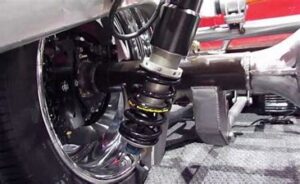The hydraulic pump is the heart of any hydraulic system used. Every hydraulic system requires high-pressure incompressible fluids for generating force. Today we will discuss how hydraulic pumps work in detail.
Hydraulic pumps are the pumps that are used in hydraulic drive systems and they can be hydrostatic as well as hydrodynamics.
Although hydraulic pumps are of various types, they all work on the same principle which is Pascal’s Law. It is a mechanical source of power that converts mechanical energy into hydrostatic energy (also called hydraulic energy).
Table of Contents
How do Hydraulic Pumps Work?
A pump is used to produce liquid movement or flow, it does not generate pressure. The type of flow produced by it is necessary for the development of pressure which is a function of resistance to fluid flow in the system.
For example, the pressure of the fluid at the pump outlet is zero for a pump not connected to a system (load). Moreover, for a pump delivering into a system, the pressure will rise only to the level necessary to overcome the resistance of the load.

Classification of Hydraulic Pumps
All pumps are classified as either positive-displacement or non-positive-displacement. Most pumps used in hydraulic systems are positive-displacement.
Pumps that are categorized as non-positive-displacement pump produces a continuous flow because it does not provide a positive internal seal against slippage, its output varies considerably as pressure varies.
In case the output port of a non-positive-displacement pump was blocked off, the pressure would rise, and output would decrease to zero. Although the pumping element would continue moving, the flow would stop because of slippage inside the pump.
In pumps that are classified as positive-displacement pumps, slippage is negligible compared to the pump’s volumetric output flow. If the port which is the output port were plugged, the pressure would increase instantaneously to the point that the pump’s pumping element or its case would fail that is probably burst if the drive shaft did not break first, or the pump’s prime mover would stall.
Two functions are performed when a hydraulic pump operates. The first function that it performs is, that its mechanical action creates a vacuum at the pump inlet which allows the atmospheric pressure to force liquid from the reservoir into the inlet line to the pump. The second function that it performs is, that its mechanical action delivers this liquid into the pump outlet and then it forces it into the hydraulic system. It produces the liquid movement or flow but does not generate pressure.

Since it doesn’t generate pressure, it produces the necessary flow for the development of the pressure which is the function of resistance to fluid flow in the system.
One can understand its working, once after knowing the construction and the parts of the hydraulic pump that it consists of. So, the hydraulic pump is firstly used to energize the fluid, so that it can flow from a lower potential to a higher one easily.
It has several mechanical moving components that help in receiving energy from the other source which is mainly the electrical part. Most hydraulic pumps contain rotating parts that help in operating using the electrical source. The main components of the hydraulic pumps are:
Pump Housing:
This is also called casing. It is the exterior part of the hydraulic pump that protects the inner components from damage. The smaller pumps use aluminum as the construction material and the others use iron.

Impeller blades:
This will rotate inside the pump housing. The rotation helps in rotating the surrounding fluids and thus, the fluid flows from the lower potential to the higher potential. Hence, playing a very important role in lubricating and cooling the system.
Pump Shaft:
It is used to mount the impeller. Generally, steel or stainless steel is used for constructing the shaft and the size depends on the size of the impeller that is used.
Bearing Assembly:
It assists in the continuous impeller rotation, done by the ball bearings. Most of the configurable pump uses standard ball-type anti-friction bearings.
Sealings:
Most of the pumps are failed due to the damage caused to them by the bearing assemblies. Seals are used as they help to eliminate the risk of failure to a much greater extent by protecting the bearing assemblies from contaminants and the coolants.
It also carries an oil or some other type of fluid from the reservoir/tank to the other part of the system. Its working is based on the displacement principle. In this, both the inlet and outlet contain different check valves. The check valve that is located at the inlet pushes the fluid from the tank/reservoir into the pump and the other valve that is located at the outlet pumps the fluid to other parts of the system.
The vacuum created will push the fluid into the pump inlet. Electric, motors or a gas engine are used as the prime mover that is used to rotate the shaft. The impeller blades are located on the shaft and the surrounding fluids rotate with the movement of the shaft.
The vacuum is created inside the cylinder when the piston is pulled. Once the vacuum is created in the outlet, it closes the outlet check valve and then opens the inlet check valve. Then, the fluid from the tank or the reservoir enters the pump and then partially fills the cylinder. When the piston is pushed, the fluid molecules will come closer and the inlet check valve that is present will get closed. This will soon, open the outlet check valve, and then the fluid will flow through it, thus helping the cylinder to get filled up.
Also Read: Understanding the Hydraulic Suspension System
1. How Does Hydraulic Work?
To generate fluid power, hydraulic systems require a pump to push hydraulic fluid through the system. The fluid goes through the valves and into the cylinder, where it is converted back into mechanical energy. The valves direct the liquid flow and release pressure when necessary.
2. What Are The 3 Different Types Of Hydraulic Pumps?
In mobile hydraulic applications, there are commonly three types of hydraulic pump structures. These include gear, piston, and vane pumps, as well as clutch, dump, and trash vehicle pumps such as dry valve pumps and Muncie Power Products’ Live PakTM.
3. What Are The Several Ways Hydraulic Pumps Generate Pressure?
Pumps with pistons
Attached to the swashplate’s front face is a series of pistons. Because the swashplate is offset at an angle, the pistons move in and out as it turns. This forces hydraulic fluid into and out of the piston chambers, therefore creating pressure within the system.
The Takeaway
Now that you know how hydraulic pumps work, they are used in various fields like they are used in every conceivable mobile or industrial hydraulic machine. They are used on excavators, cranes, loaders, tractors, vacuum trucks, forestry equipment, dump trucks, graders, mining machinery, etc.
These days even mobile applications use hydraulic pumps. Thus, due to their efficient working, their use is increasing day by day and are now used everywhere.
If you have any doubts, please let us know in the comments below.
Cheers!



